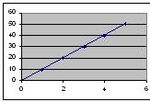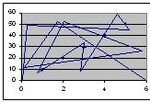Bivariate data
Not to be confused with Univariate Data
In mathematics, bivariate data shows what relationship 2 objects have. It is a form of scientific form of guesswork which can prove that anything can have a relationship (see below).
Rules[edit]
There are a few simple simple rules that need to be followed when determining what relationship two objects have;
- 1. Which object depends on which? This is usually a very simple process, but is often stuffed up because of the large population that cannot spoke the english proper. However, in recent times a system has been implemented to help these people. It involves looking at a 30 year old man who stills lives at home and his
suckerunfortunate girlfriend. - 2. Is there a relationship between the two objects? Look, this whole concept was put in just to make this sound true/shut scientists up. The truth is, everything has a relationship, so you can just skip this step.
- 3. Can you predict one with the other? Don't worry, there are calculators to do this.
- 4. How reliable are my predictions? If you've
fucked this upmade a mistake, it's really easy to pick up. For example, if you are proving the relationship between the 100 and national debt and you get a relationship that is perfect and somehow involves a slice of pizza, you've probably made a mistake. However if you are proving the relationship between John and Janette and you get some sort of garbage involving bizarre politics and someone's anus, then you're probably on the right track.
The 'mathematics' behind it all[edit]
Once you have chosen your 2 objects, it's time to prove they have a relationship.
Dependency[edit]
Before proving a relationship, we must prove (in theory) which object would depend on which. This is done either through attempting to make sense of the English language, scouting out a house, or by tossing a coin (note the word coin is a subsititution for another word, due to legal reasons. Click coin to see the real object that should be used... actually you should do that a lot in this article).
Good relationships[edit]
If 2 objects have a good relationship, we say that it is a 'positive' relationship. To prove that something has a good relationship it must pass at least 3 of the following criteria;
- Is there any incriminating photos that belong to the 2 objects?
- Does one object cause the other to do things it would never do before (ie go shopping, jump off a cliff etc)
- When each object is assigned a coin and the coins are tossed (with heads making +1, tails -1), do the objects give a positive number?
- If a=1, b=-1, c=2, d=-2 etc, when all letters in one objects name are substituted then combined, do they make a positive number?
There is an extreamly complicated process which allows you to see if any of the 4 criteria apply, however is is usually eaiser to collect a seemingly irrelivent set of data and place it on a graph. If the graph looks something like the graph on the right, then it is a positive relationship.
Bad relationships[edit]
If 2 objects have a bad relationship, we say that it is a negative relationship. To prove that it is a bad relationship, it must past 3 or the following criteria.
- Are there no incriminating photos that belong to the 2 objects?
- Does one object not cause the other to do things it would never do before (ie go shopping, jump off a cliff etc)
- When each object is assigned a coin and the coins are tossed (with heads making +1, tails -1), do the objects give a negative number?
- If a=1, b=-1, c=2, d=-2 etc, when all letters in one objects name are substituted then combined, do they make a negative number?
There is an extreamly complicated process which allows you to see if any of the 4 criteria apply, however is is usually eaiser to collect a seemingly irrelivent set of data and place it on a graph. If the graph looks something like the graph on the right, then it is a negative relationship.
Proving that absolutely anything has a relationship[edit]
Although bi-variate data is supposed to be a mathematical powerhouse of logic, there is no apparent formula for saying if something has a relationship or not, however;
“If it sounds true, it probably is true”
So therefore anything can have a relationship by using the good old method of bullshiting. For example:
The relationship between length of hair and IQ
It's bleeding obvious to anyone that has a half a brain that there is no relationship here. However, upon further examiniation, we can soo see that there is. Eienstine had a long hair, and look how smart he is. Homer Simpson has little/no hair and subseuqntly is a moron.


